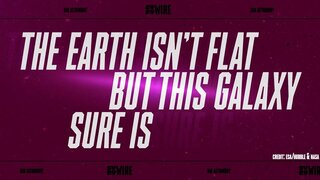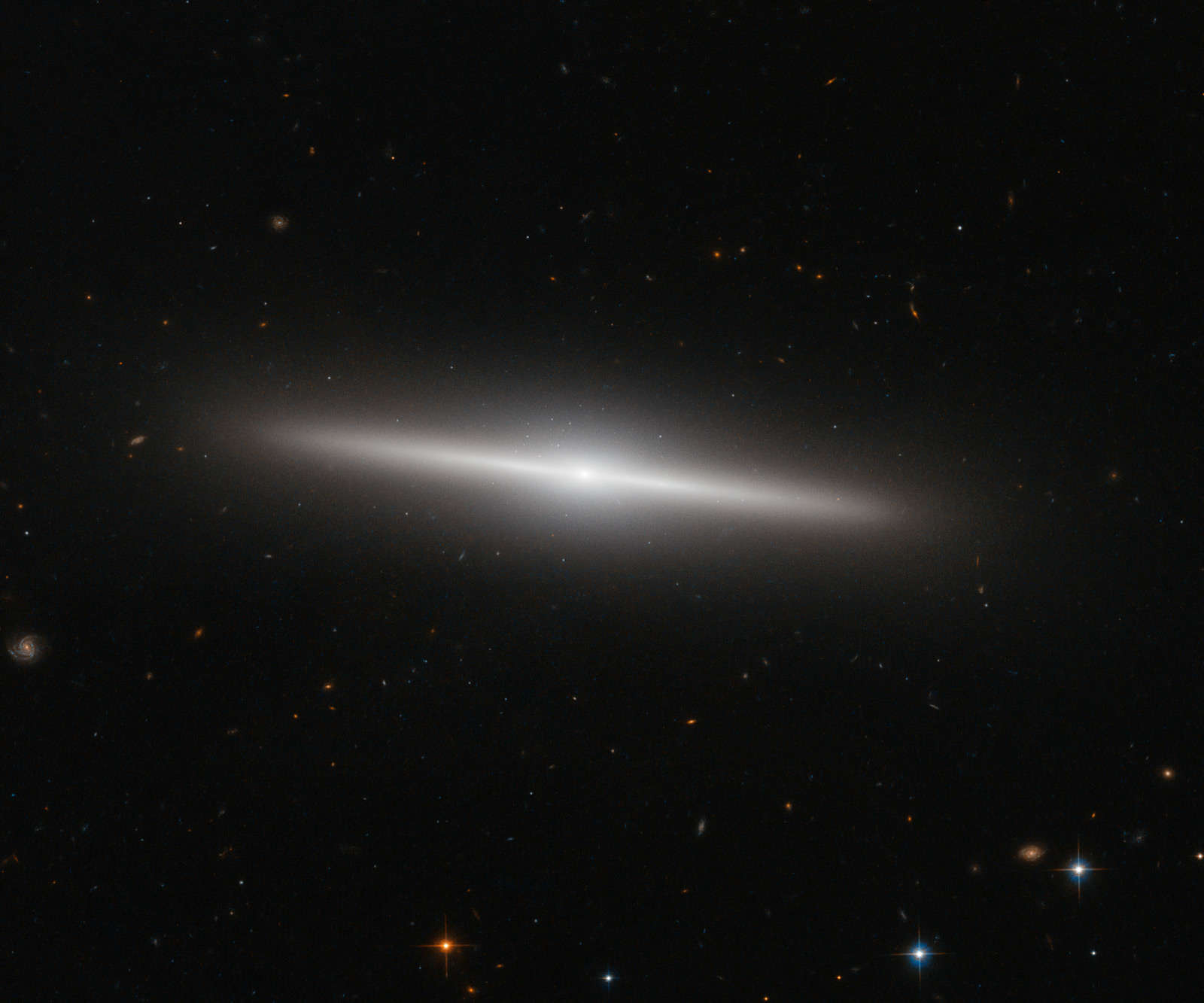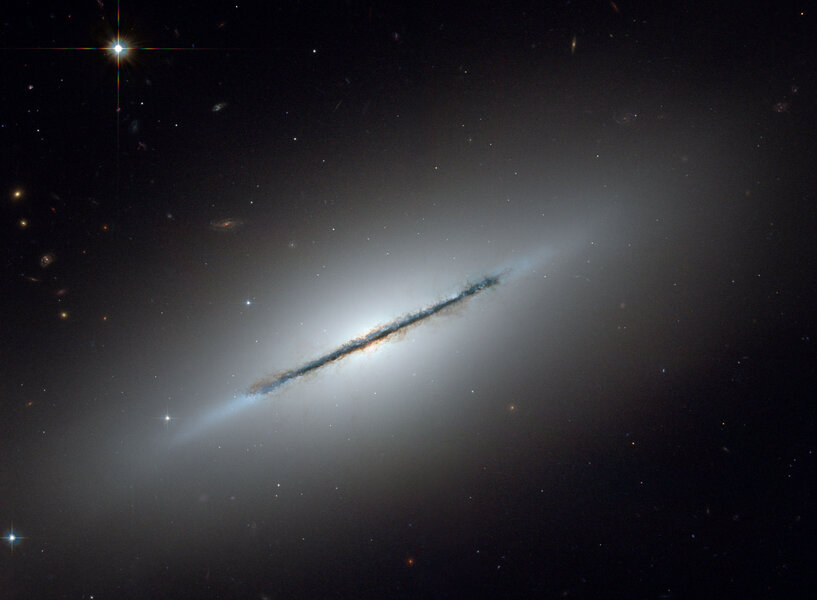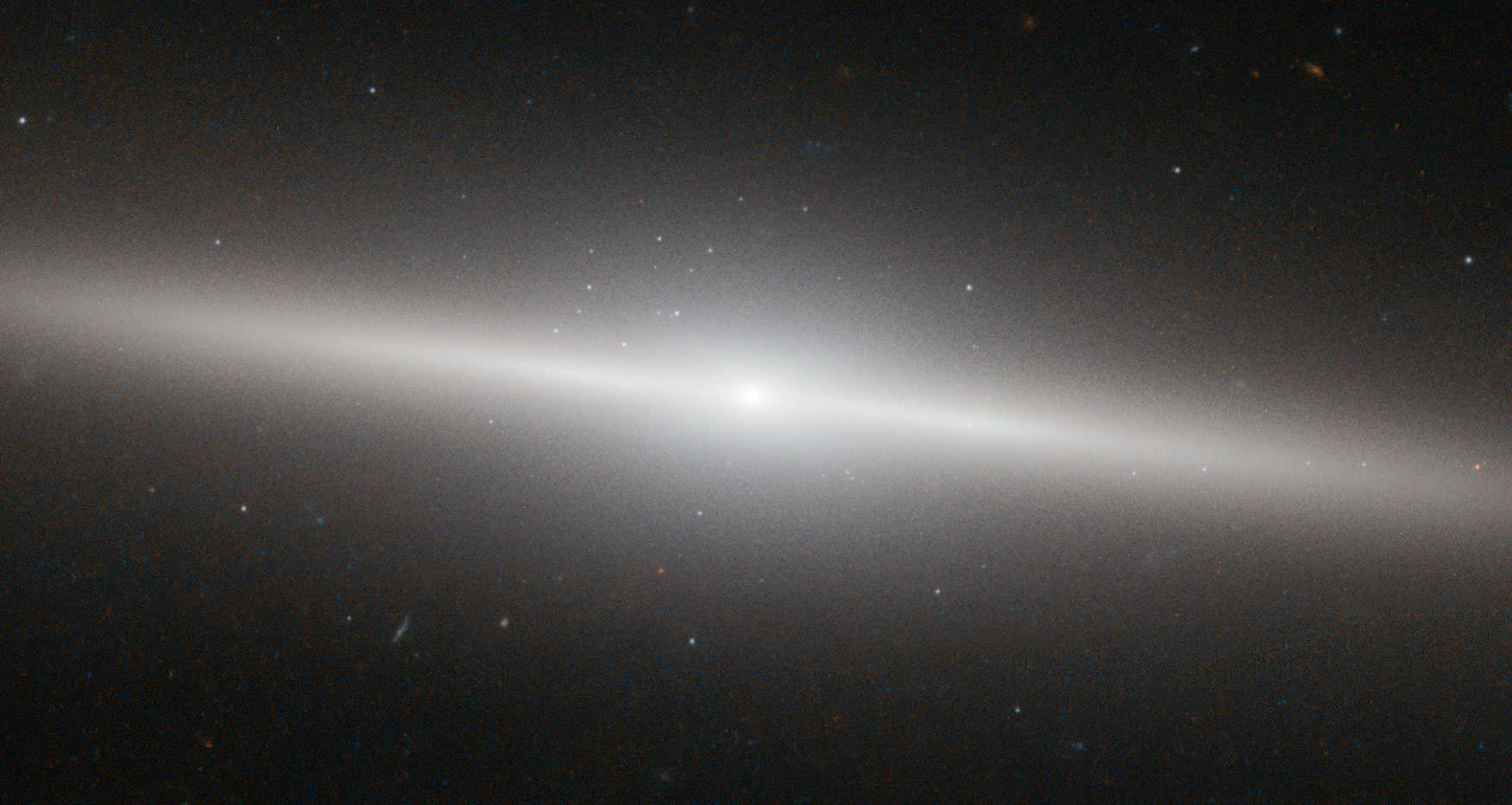Create a free profile to get unlimited access to exclusive videos, sweepstakes, and more!
The Earth may not be flat but this galaxy sure is

From the ground, the Earth looks flat.
That’s an illusion of sorts, of course. There’s a lot of evidence the Earth is actually a spheroid if you look carefully. And, obviously, from space our planet is clearly a ball.
This illusion can work in reverse, too. Some disk-shaped galaxies are face-on to us, making them appear as magnificent circular objects, grand and sprawling across tens of thousands of light years.
But seen from the side they appear very different. Disk galaxies, including the Milky Way, are quite flat, and can be a hundred times wider than they are deep, like a DVD seen edge-on.
And then there’s IC 335. It’s a disk galaxy, of that there’s little doubt, but what kind? Because we see it almost perfectly edge-on, it’s hard to tell, and hooo boy, it does not want to reveal its secrets.
Behold!
Whoa. That is one flat galaxy.
This Hubble Space Telescope image of it is pretty interesting. The galaxy is white! That too is a bit of an illusion; this is a two-color image, and not three like “natural color” images that mimic how our eyes see. Still, it was taken in a filter that sees blue light (blue in the image) and another that sees in the near-infrared (red in the image). You can see some stars near the bottom right with both colors in them.
It’s hard to judge what this might mean about the galaxy, since this image has been processed for beauty and not science, but one thing is very obvious: It has no dust!
Generally speaking, disk galaxies have a lot of dust clouds, dark blobs of rocky and sooty grains that can be hundreds of light years across. They lie very close to the midplane of the galaxy and are opaque to visible light, so when the galaxy is edge-on you see the dust cutting across the middle like a knife.
If IC 335 had dust then it would be extremely obvious in the blue filter image. Instead, nothing.
For comparison, here's a different galaxy (NGC 5866) with a dusty disk:
That implies very strongly IC 335 is what we call an S0 galaxy, one that’s part disk galaxy (the S is for spiral, which most disk galaxies are, and the 0 for how round it is) and part elliptical. Spiral/disk galaxies usually have lots of gas and dust and are actively making stars, while ellipticals are puffy and spheroidal and lack the dust and gas, so they are not making stars.
How can a galaxy lose its gas and dust? One way is for it to be a part of a galaxy cluster, an immense collection of hundreds or even thousands of galaxies. The galaxies all orbit around their common center of mass, and there’s usually gas between the galaxies. A disk galaxy plowing through that material can have its gas and dust all blown out by ram pressure (I have a longer description of how this works, complete with a colorful metaphor).
And hey, whaddya know? IC 335 is part of the Fornax Cluster, which is about 60 million light years away. Interestingly, too, it appears to be oriented face-on to the cluster center. If it is indeed moving through all that intracluster gas then being flat in the direction of travel makes it easier to lose all the dust. That’s not conclusive, but it fits.
If we could travel the 600 quintillion kilometers to the galaxy and see it face-on, it might appear to us as a dim, featureless disk, filled with stars but with no obvious spiral structure at all. There would be a central bulge — it’s the brightish blob in the galaxy’s middle — but possibly no other striking features. In the image it looks to me that the central bulge and inner disk are bluer and the edges of the disk redder, but that may be due more to how it’s processed than what it looks like in reality. So really, the best we can do here is just guess at what this galaxy looks like and how to classify it.
One thing I noticed is a collection of bluish blobs near the galaxy’s center. I thought those might be stars in our own galaxy in the foreground, but it so happens IC 335 is located in a part of the sky where our galaxy is diffuse, and so very few stars can be seen. They also look blobbier than stars.
Suspicious, I did a literature search. It turns out the team that took this image did so in part to characterize a bunch of galaxies in the Fornax Cluster, and in one paper they talk about globular clusters in the galaxies. These are huge balls of hundreds of thousands or even millions of stars that orbit galaxies, and what I suspect those blobs in the image are. The paper even mentioned they appear more blue than red, so that also fits. Astronomical intuition for the win!
Still, it’s a little frustrating not being able to know what kind of galaxy this is or what its history is. That can’t always be known, at least not with the observations we have now. Perhaps future observations will tell the tale. Still, what’s a loss to science is a spectacular addition to art, because whatever IC 335 is, it’s a beauty.





























